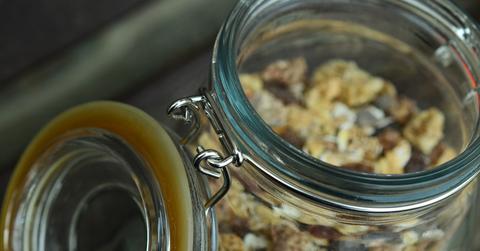16 Replacements For The Most Common Disposable Products In Your Home
It's easy to get into the habit of buying and replacing household items. But there’s a simple way to throw a kink into the system—and that’s by no longer wasting our money on disposable products that have easy, cheap, and renewable stand-ins.
Updated Nov. 19 2020, 9:38 p.m. ET
Too often, we can get into the habit of using more than we need to. We buy, we use, and we throw away. It’s the opposite of sustainability, and it’s wreaking havoc on our planet. But there’s an easy way to throw a kink into the system—and that’s by no longer wasting our money on disposable products that have easy, cheap, and often renewable stand-ins.
Here are 16 of the most common disposable household products—and alternatives you can use starting right now.
Paper towels 
Cloth napkins, fabric squares from stained or ripped clothing, and even newspapers you’ve already read and junk mail fliers are all perfect stand-ins for paper towels. Any fabrics can be thrown in with other loads of laundry, and paper products like newspaper can be composted.
Paper napkins
There’s really no reason to be using paper napkins. Cloth feels classier, is washable, and can be reused hundreds of times. Pick darker colors if you’re worried about stains.
Facial tissue
People were perfectly fine using handkerchiefs for hundreds of years. Just toss used items into your next load of laundry to kill any viruses present. The wash will take care of them, no hot-cycle needed.
Disposable plates, cups and cutlery
Farmhouse chic is all the rage, and you can find tons of washable and mismatched cups, plates, forks, knives and mason jars at your local thrift shop to be reused indefinitely. Place settings with these pieces can be fun and absolutely beautiful. This is a perfect way to host a memorable get-together without putting a strain on our natural resources.
Bottled water
Recycling empty water bottles doesn’t alleviate the amount of energy expended into their creation (and recreation). When you consider that at least a quarter of all bottled water is from the tap anyway, we’re overdue for ditching this trend altogether.
If you live in an area without good tap water, find a local spot where you can bring 5-gallon jugs for refilling. When you travel, bring along a reusable water bottle that you can load up at water fountains and faucets. If you find yourself out and without your reusable bottle, do your best to go without until you get somewhere you can hydrate.
Plastic food bags 
Sandwiches don’t need plastic bags—and neither does any of the food you usually store this way. Steel food containers and mason jars can cover just about all of your bases. The one exception I’ll make is for vacuum-seal bags, which I use for preserving fresh produce. The positive side here is that they’re all reusable so they last for years.
Coffee filters
Even if you have a coffee maker requiring filters, there are “permanent” filters you can buy that will last the life of the appliance (and often longer than that).
Q-tips 
Earwax is a naturally occurring item that takes care of itself. Q-tips are ridiculous wastes of time and energy—all you need is warm water around your earlobe and behind your ear. If you have an earache or buildup, a few drops of apple cider vinegar in your ear should do the trick.
Plastic straws 
There’s a stainless steel replacement for that.
Gift-wrap 
Gift-wrap is such a waste! It literally only exists to be ripped from a present in mere seconds and instantly forgotten. I totally get that a beautifully wrapped gift makes people feel warm and snuggly inside, but there are ways to pull that off using upcycled paper that you’ve decorated, or is already decorated.
Just keep your eyes peeled for fun designs on wallpaper sample books, large books in a library’s free bin that have colorful images, and hang onto any brown paper bags that you can use as wrapping with your own flair added.
Plastic shopping bags 
Reusable bags are always your friend.
Food packaging 
At my farm, we stopped buying packaged food four years ago. Now, it’s just whole ingredients like bulk rice and grains, dried beans… and a tiny fraction of the amount of packaging. This is also a great way to ensure you’re eating healthier, as sugars, fats and calories are prevalent in processed, packaged foods.
Tampons and sanitary napkins
Period-proof underwear, reusable silicone cups… there are endless options out there now to choose from.
Diapers and baby wipes
I know, the last think you need with a new baby is extra work. But you’ll save thousands with a good stash of durable cloth diapers. There are even cloth-diaper services that deliver fresh, clean diapers weekly and wash what’s been used are cheaper than disposable options! Cloth wipes are much better for babies’ skin than paper wipes, and can be thrown in with any load of laundry.
Cotton balls
Like paper towels and napkins, cotton balls are easily replaced by fabric alternatives. Little circles of soft fabric like fleece are all you need to stand in for these wasteful cotton balls. Cut your own out of old hats, scarves and PJs, or buy a set that will easily last you a year or more.
Toilet paper
Maybe not for everyone, cloth toilet paper isn’t terribly different from using cloth wipes or diapers for babies. Just keep a lidded container for the fabric next to the toilet, and wash with hot water and vinegar. The cloths can be homemade, or you can buy pre-made wipes that can get hundreds of uses.
